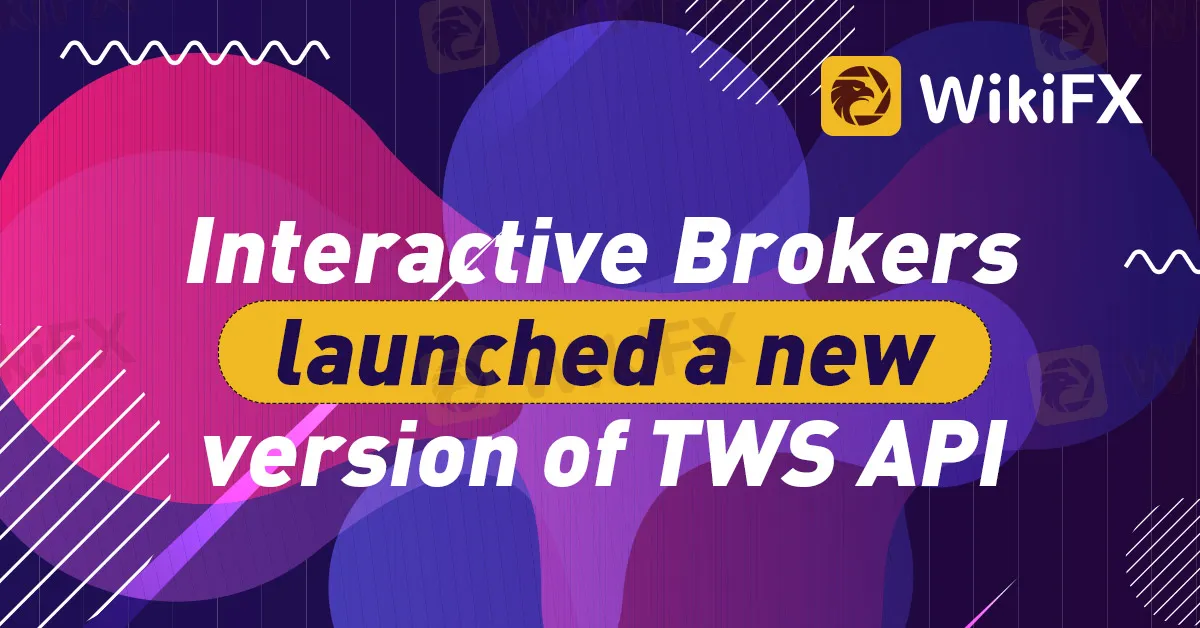简体中文
繁體中文
English
Pусский
日本語
ภาษาไทย
Tiếng Việt
Bahasa Indonesia
Español
हिन्दी
Filippiiniläinen
Français
Deutsch
Português
Türkçe
한국어
العربية
Interactive Brokers launched a new version of TWS API
Abstract:Interactive Brokers has recently unveiled the latest version (10.22) of its TWS API, which includes new features and updates to enhance the company's trading solutions.

Interactive Brokers has recently unveiled the latest version (10.22) of its TWS API, which includes new features and updates to enhance the company's trading solutions. The release introduces support for delayed yield bid/ask and includes two new tick types: DELAYED_YIELD_BID = 103 and DELAYED_YIELD_ASK = 104. However, the solution no longer supports FADataType.PROFILES and has unified Groups and Profiles.
The company regularly updates its TWS API to improve its functionality. In November 2022, Interactive Brokers released version 10.19 of its TWS API, which included Bond Issuer enhancements. This update added new fields to the SymbolSamples response and ReqContractDetails request.
The TWS API also offers support for the instrument timezone, allowing users to send date/time values in different formats, such as UTC format, the instrument's exchange timezone, and the operator's timezone.
About Interactive Brokers

Interactive Brokers has been given by WikiFX a decent score of 8.15/10. Interactive Brokers is a popular online brokerage firm that provides trading solutions for various financial instruments, including stocks, options, futures, currencies, and bonds. The company was founded in 1978 and has since grown to become one of the largest and most reputable brokerage firms in the world. Interactive Brokers offers advanced trading technology and tools that cater to both individual and institutional clients. They are known for their low trading fees, high-quality customer support, and comprehensive range of trading products and services. The company is regulated by several financial authorities globally.

Disclaimer:
The views in this article only represent the author's personal views, and do not constitute investment advice on this platform. This platform does not guarantee the accuracy, completeness and timeliness of the information in the article, and will not be liable for any loss caused by the use of or reliance on the information in the article.
Read more

March Oil Production Declines: How Is the Market Reacting?
Oil production cuts in March are reshaping the market. Traders are closely watching OPEC+ decisions and supply disruptions, which could impact prices and future production strategies.

How to Calculate Leverage and Margin in the Forex Market
Leverage amplifies both potential profits and risks. Understanding how to calculate leverage and margin helps traders manage risks and avoid forced liquidation.

USD/INR, USD/PHP Forecast April 2025
The global forex markets are bracing for April 2025 with divergent forecasts for key emerging market pairs. In particular, the USD/INR and USD/PHP pairs have attracted significant attention amid a mix of central bank interventions, evolving U.S. policy signals, and regional economic shifts. In this article, we review multiple forecasts, examine the driving factors, and outline what traders might expect as the month unfolds.

April Forex Trends: EUR/USD, GBP/USD, USD/JPY, AUD/USD, USD/CAD Insights
Know April’s forex seasonality trends for EUR/USD, GBP/USD, USD/JPY, AUD/USD, and USD/CAD. Historical insights and key levels to watch in 2025.
WikiFX Broker
Latest News
Exposing the Top 5 Scam Brokers of March 2025: A Closer Look by WikiFX
Gold Prices Climb Again – Have Investors Seized the Opportunity?
Webull Launches SMSF Investment Platform with Zero Fees
Australian Regulator Warns of Money Laundering and Fraud Risks in Crypto ATMs
The Withdrawal Trap: How Scam Brokers Lure Victims into Paying More
FCA to Investors: Think Twice Before Trusting These Brokers
Trump\s tariffs: How could they affect the UK and your money
Trump gambles it all on global tariffs he\s wanted for decades
HTFX Spreads Joy During Eid Charity Event in Jakarta
How Will the Market React at a Crucial Turning Point?
Currency Calculator







